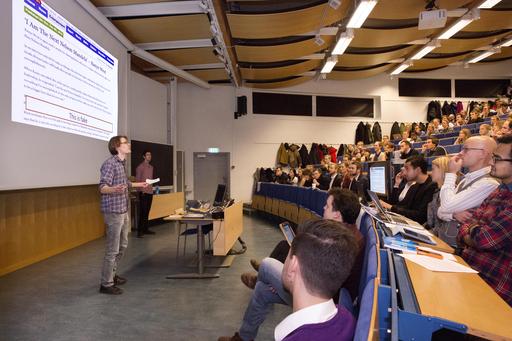Visa version
Visa
< föregående
Jämför
< föregående
4.4.3 Oral presentation
Oral presentation activities are excellent to promote learning within the field and for you as a teacher to understand how well students have grasped their project work and the knowledge field. Oral presentations can vary in infinite ways. Each coaching session involves oral presentations with findings and questions, and by making sure all team members are involved in the discussion, they are constantly trained to speak about their work. If you create cross-group sessions, where each team member presents their work in front of a group of other students, you will also make sure all students have time to practice oral presentation skills in quite small and safe settings.
Several types of role-play activities can be fruitful for developing oral presentation skills and the knowledge within the field. This can be in the format of a political debate, a discussion held at a company with different staff members who are solving a case, or an invented discussion between academia, industry and society.
By looking at video clips with the students on different forms of oral presentations, you can create a list of important aspects to consider when talking in front of different target groups. These aspects can also be a basis for the feedback and assessment criteria within your course.

Students performing their final presentation, Future of Media.
Example of oral presentation in the course Future of Media: At the end of the course, the students make a final presentation. Most project teams also make a film that illustrates how they have dealt with their project task and the films are showed during the presentations.
Teachers from the department as well as a jury attend the final presentation session. The jury contains teachers, a guest lecturer, representatives from industry, as well as alumni. The jury will give feedback on the students ' presentations and on their solutions. The audience also includes students from first, second and third grade of the programme.
Suggestion: Let the students present their projects, at least to each other, but preferably also for an external audience, e.g. with representatives from the industry or external partners as this will prepare students for future work.